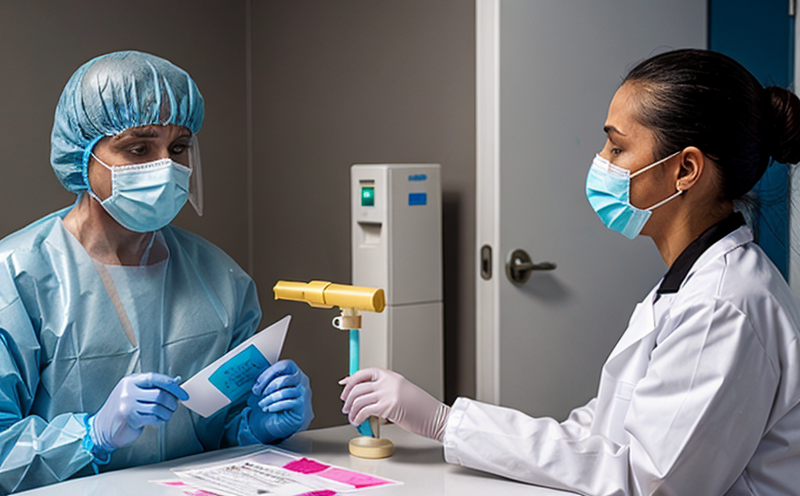Koi Herpesvirus (KHV) Testing in Ornamental Fish
The Koi Herpesvirus (KHV), also known as Cyprinid herpesvirus 3 (CyHV-3), is a highly contagious and often fatal viral disease that affects koi and other ornamental carp species. The virus can spread rapidly through water, direct contact, and contaminated equipment, posing significant threats to the aquaculture and ornamental fish industries.
Early detection of KHV infection is crucial for preventing widespread outbreaks and minimizing mortality rates among affected populations. Accurate and reliable testing ensures quick response measures such as quarantine, disinfection, and treatment protocols. Our laboratory offers comprehensive KHV testing services tailored specifically to the needs of ornamental fish breeders and enthusiasts.
Our testing process begins with a thorough examination of the sample submitted by our clients. This involves visual inspection for signs of infection alongside molecular diagnostic techniques like Polymerase Chain Reaction (PCR). PCR amplifies genetic material from the virus present in the sample, allowing for precise identification even at low concentrations.
The following are key steps involved in conducting KHV tests:
- Sample collection and transport: Properly collected samples are critical to ensuring accurate results. Samples should be taken from fish displaying symptoms or exhibiting signs of stress that could indicate viral activity.
- Preparation: Once received, the sample undergoes preparation steps which may include homogenization if necessary followed by RNA extraction using standard protocols.
- Detection: PCR amplification targets specific regions within the viral genome. Positive results indicate active KHV infection while negative outcomes suggest absence of detectable virus at that time point.
- Reporting: Results are provided promptly along with recommendations for management based on current best practices in aquaculture and veterinary medicine.
In addition to routine diagnostic testing, we also offer surveillance programs aimed at monitoring KHV prevalence within specific populations or geographic regions. These proactive measures help maintain biosecurity standards and protect valuable stock from potential introductions of new pathogens into established communities.
Our commitment to excellence in infectious disease testing is reflected not only in our cutting-edge technology but also through continuous training for our personnel and adherence to stringent quality assurance protocols. By leveraging these resources, we strive to provide accurate, timely diagnoses that contribute positively towards maintaining healthy populations of ornamental fish both commercially and recreationally.
Applied Standards
| Standard | Description |
|---|---|
| ISO 15189:2012 | This international standard specifies general requirements for quality and technical competence of medical laboratories. It ensures that our laboratory adheres to rigorous standards ensuring accuracy, precision, reliability, and traceability in all tests performed. |
| American Society for Testing Materials (ASTM) | ASTM guidelines provide additional validation criteria when necessary, particularly regarding sample preparation procedures and reagent formulations used during testing. Compliance with these standards enhances confidence in our test results. |
Quality and Reliability Assurance
We maintain high levels of quality assurance throughout every aspect of our KHV testing process to ensure consistent accuracy and reliability. Our laboratories are equipped with state-of-the-art instrumentation, including advanced PCR machines capable of detecting minute quantities of viral DNA. Each instrument undergoes regular calibration checks according to manufacturer recommendations.
Our personnel receive ongoing training on the latest methodologies and best practices related to KHV testing so they remain up-to-date with evolving scientific knowledge. This continuous education ensures our team remains proficient in interpreting complex data sets generated from modern diagnostic tools.
To further enhance reliability, we utilize strict quality control measures such as internal audits, proficiency testing programs, and participation in external benchmarking exercises conducted by recognized bodies like the College of American Pathologists (CAP). These initiatives help identify areas for improvement and reinforce our commitment to delivering precise results consistently across all samples analyzed.
Client satisfaction is paramount; therefore, we strive to meet or exceed expectations through transparent communication regarding turn-around times, detailed reporting formats, and support during interpretation phases whenever required. We are committed to fostering long-term relationships built on trust and reliability by providing consistent, high-quality services.
Use Cases and Application Examples
- Ornamental fish breeders wishing to screen newly acquired stock before integration into existing populations.
- Retail outlets seeking assurance that their inventory does not contain KHV-positive specimens prior to sale.
- Aquarium operators needing periodic monitoring of their collections to prevent unexpected outbreaks from occurring.
- Research institutions conducting studies on the epidemiology and pathogenesis of KHV aiming to establish baseline data or explore potential therapeutic interventions.
- Government agencies responsible for regulating the trade and transport of ornamental fish ensuring compliance with national biosecurity policies.





